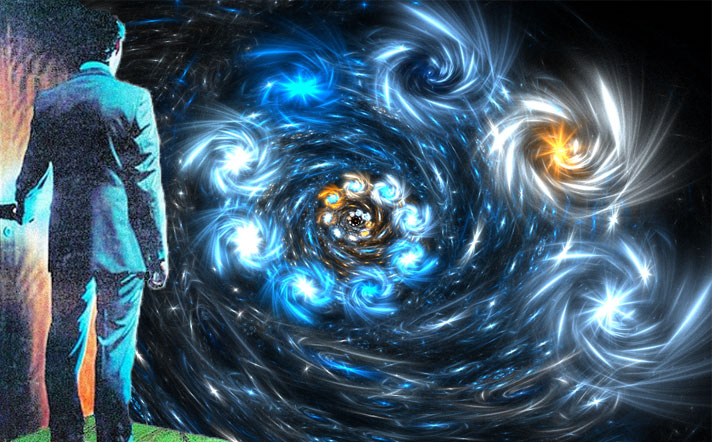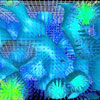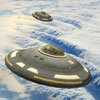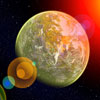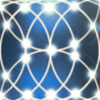Breaking The Time-Space Barrier
An American photographer was in India and wanted to photograph Sai Baba with his sophisticated camera. However when he came to take the photographs, he was bitterly disappointed to find that he had insufficient film. The particular film he needed could not be obtained in that part of India. Sai Baba waved his hand in the air and manifested two rolls of the special film. The delighted American loaded his camera and proceeded to take the photographs of Sai Baba, who is unmistakable in appearance with his bushy hair and long flowing orange robes.
On his return to the USA, the photographer dropped the film into his usual supplier to be developed. When he collected the prints, the man behind the counter remarked on the pictures of Sai Baba, saying: “Why, that man was in here a few weeks ago and bought two rolls of film”.
There are numerous accounts of Sai Baba visiting people in one place when it is known that he is somewhere else. This extraordinary ability to be in two places at the same time is known as bilocation. Bilocation is by no means unique to Sai Baba. Known in India as a siddhi, it is one of a number of remarkable powers traditionally ascribed to advanced yogis.
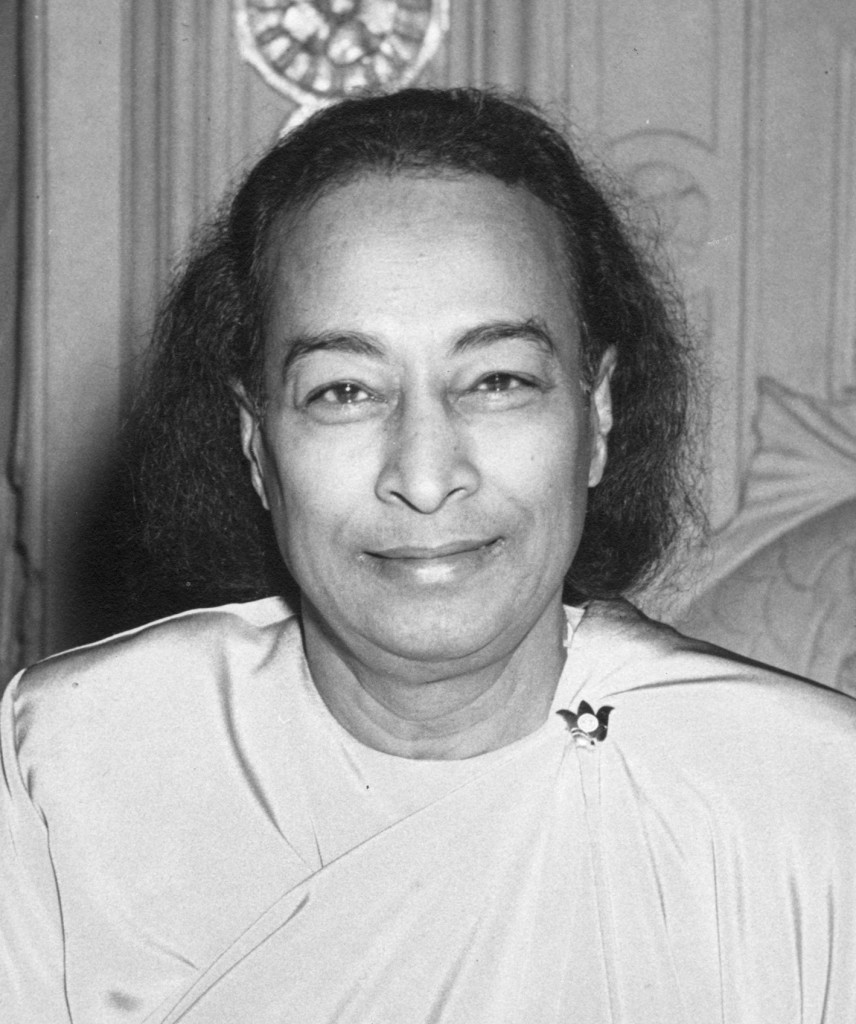 The famous 20th century yogi, Paramahansa Yogananda (1883-1952), first encountered the power of bilocation at the age of twelve. This incident impressed him deeply, and is described in his book The Autobiography of a Yogi. Yogananda was running an errand for his father; he had been sent into the local town of Benares to deliver a letter. His father had mislaid the address, so he sent the boy instead to a certain Swami Pranabananda who could forward on the letter.
The famous 20th century yogi, Paramahansa Yogananda (1883-1952), first encountered the power of bilocation at the age of twelve. This incident impressed him deeply, and is described in his book The Autobiography of a Yogi. Yogananda was running an errand for his father; he had been sent into the local town of Benares to deliver a letter. His father had mislaid the address, so he sent the boy instead to a certain Swami Pranabananda who could forward on the letter.
When Yogananda arrived at the Swami’s home the front door was open. The boy entered to find a rather stout man in a loin cloth meditating. No warning had been given that Yogananda was coming, but it was immediately clear that he was expected. Before Yogananda could even introduce himself, the swami said, “Are you Bhagabati’s son? Of course I will locate your father’s friend for you”.
The swami then closed his eyes and went back into meditation. Young Yogananda shuffled about awkwardly in the silence, not knowing what to do or say.
After a while, Swami Pranabananda opened his eyes and smiled at Yogananda. “Little sir”, he said, “don’t get worried. The man you wish to see will be with you in half an hour”. With that the swami once more resumed his meditation. The minutes ticked by. Yogananda glanced at his watch now and again, but most of the time he kept his eyes on the yogi.
After half an hour had passed, the swami aroused himself and announced that the man was nearing the door. Moments later, there were footsteps on the stairs. A man entered and went up to Yogananda.
“Are you Bhagabati’s son who is waiting for me?”, he asked. “Half an hour ago, Swami Pranabananda approached me as I was bathing in the Ganges. I don’t know how he knew I was there. He said you were waiting to see me at his apartment and asked me to return there with him. He grasped me by the hand and said it was a half-hour walk. He then announced that he had other business to attend to, left me and melted away into the crowd.”
Yogananda found it hard to believe what the man was saying. “Why”, he exclaimed, “Swami Pranabananda has not left my sight for a moment since I first came about an hour ago!”
Bilocation is at the limit of what many people can believe. However there are numerous accounts of this extraordinary phenomenon down through the ages. The Greek sage Pythagoras, reputed to have established esoteric mystery schools, is said to have bilocated on at least one occasion.
According to his biographer Iamblicus, Pythagoras once taught on the same day in two places: one on the island of Sicily, and the other on the Italian mainland, normally many days journey away.
Even in this century, two well-known mystics — Therese Neumann and Padre Pio — are said to have bilocated. Padre Pio (1887-1968) was an Italian monk famous for his paranormal gifts — including telepathy, miraculous healing, and the stigmata. He first experienced bilocation in January 1905; while in the choir of his seminary in Italy, he suddenly found himself transported into the midst of a wealthy household in a remote city. The family there was in crisis; the wife was giving birth whilst her husband was dying. Padre Pio was able to help them, and subsequently played a vital role in the child’s adult life.
Those who bilocate usually have a range of other paranormal powers as well. In the case of Sai Baba, the most significant of these is of course materialisation, which we have explained in terms of transubstantiation.
Some people believe that bilocation is not a physical event; they attribute it to some form of out-of-the-body projection or apparition. However, there is evidence that a real body can exist simultaneously in two places. In the examples we have quoted, Swami Pranabananda shook hands with a man by the Ganges, Padre Pio spent several hours in physical contact with the distressed family, and Sai Baba walked into an American photographic shop to buy two rolls of film.
Bilocation can be explained as a real, physical event in terms of transubstantiation.
If Sai Baba can transubstantiate inanimate objects, perhaps he could do the same thing with his own body. Imagine that he could take his body at will through the light-barrier. Leaving our space and time in one place, Sai Baba could re-enter it at another, He could pass through the light-barrier in India and return through it in America. Sai Baba could spend as long as he liked there, visiting photographic shops and buying rolls of film. He could then reverse the process and return, having traveled in and out of space and time rather than through it.
What if he chose to return to the precise point in space, in India, from which he departed? What if he could enter into the exact moment of time at which he left? To the people in India, it would be as if he had never left their presence. Occurring in less than the twinkling of an eye, it would seem as if nothing had happened.
The swami in Yogananda’s story could have followed the same procedure. Leaving his room through a ‘door’ in space-time, rather than through the door in his wall, he could have gone to collect the man from the Ganges. To young Yogananda, it would not be apparent that he had ever left his posture of meditation.
Linking bilocation with the ability to make objects appear and disappear means that we only need to assume one miraculous power to account for both phenomena. This is the power of transubstantiation, the ability to raise the speed of energy, in matter, beyond that of light. By this means, a person could pass through the light-barrier in body, leaving one place in our world to appear instantaneously somewhere else; a master of this process could appear and disappear at will, wherever and whenever he chose.
There is an alternative explanation – also involving transubstantiation – which does not require the body to move. It could be that what appears in bilocation is a duplicate body. The original body might be used as a ‘template’ to form a precise replica out of super-energy. It would then be this doppel-ganger that materialises elsewhere. The bilocation would still be a physical event, in which a real body exists in two places at the same time. But it would be only the consciousness of the person, moving freely from one body to another, that stepped in and out of space-time.
The powers of clairvoyance and precognition could find their explanation in the ability of some gifted individuals to probe beyond the light-barrier in consciousness only. Re-entering space-time at remote points in mind rather than in body, these individuals could catch a glimpse of the future and faraway places.
Before going any further in explaining the paranormal using these ideas, we need to consider the nature of space and time. The vortex offers a new explanation for what space is. It also enables us to understand the relationship between matter, space and time. Not only matter, but also space and time, can be seen as aspects of the vortex.
Consider the vortex of energy forming matter. As the vortex extends out, the energy would get thinner. Stretching over an ever-increasing area, it would rapidly get thinner and thinner. But even at great distances from the centre of the vortex, though the intensity would be infinitesimal, the vortex energy would still be there. The apparent void of space is actually very thin matter.
By the same token, it could be said that matter is very dense space. In a nutshell, matter and space are one and the same thing — they are two aspects of the same vortex of energy. What we think of as a particle of matter is merely the dense centre of an extended vortex of energy.
We only perceive matter and space as different because of our senses. All our senses are limited. Our awareness of all forms of energy is constrained within certain bands by our thresholds of perception. Our eyes respond to light. But light is only a narrow band of the spectrum; we are blind, for example, to infra-red and ultra-violet. It is the same with sound; we can only perceive sound within certain limits. The human ear only detects sound above a certain threshold; very weak sound vibrations are inaudible to us. Our perception of pitch is also restricted. Dogs can hear high frequency whistles to which our ears are deaf; the sound energy is there, but we are not aware of it.
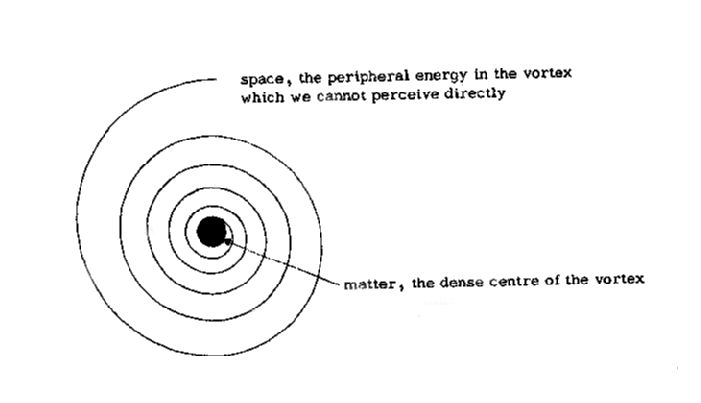 Figure 12. Matter and space are merely two different aspects of the vortex of energy
Figure 12. Matter and space are merely two different aspects of the vortex of energy
It is obvious that our awareness of energy in the vortex would also be limited by our senses. The sparse energy extending in the vortex, beyond our direct perception, would appear to us to be ‘empty space’. Whereas it would seem to be nothing but a void, this extending energy would be very real — as real as matter itself.
This account of space begins to explain the puzzling phenomenon of action-at-a-distance. In both electric charge and magnetism, one particle acts on another without touching it. Separate bits of matter seem to attract or repel each across apparently empty space.
These effects are easy to understand if each particle is actually an extended vortex of energy. The vortex could extend over a vast distance, but the energy would quickly become so sparse that we are not aware of it. This energy extending out invisibly from the particle would overlap — and interact with — the energy of other vortices to create such effects as electric charge and magnetism.
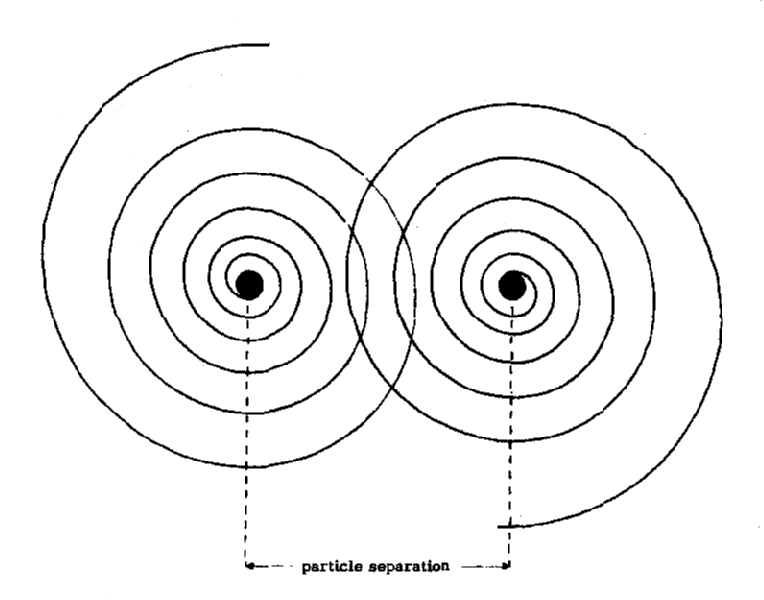 Figure 13. As vortices overlap, they interact across apparently empty space
Figure 13. As vortices overlap, they interact across apparently empty space
In this picture, space is something real, as real as matter, and action-at-a-distance is an illusion, created by the limitations of our senses. Matter is the dense central region of the vortex, which we can detect with our senses. Space has its origin in the thin, peripheral regions of the vortex: here the energy is below the threshold of our perception. ‘Space’ transmits the intrinsically dynamic nature of matter out into the void beyond the apparent surface. But matter has no real boundary: its ‘surface’ is subjective rather than objective — corresponding to the lowest intensity of vortex energy that we can perceive.
We experience everyday matter as substantial because it represents a high concentration of energy. In bodies of matter, billions of vortices are packed together in atoms and molecules, bound tightly together. The surface of a solid or liquid marks a sudden increase in the number of vortices — a vast increase in the intensity of vortex energy. This sudden high concentration of energy and binding is what our senses detect as matter. Objects appear to. have boundaries. But this is an illusion. It is simply that our senses are incapable of detecting the sparse energy spreading out in all directions.
Imagine a woman wearing a perfume. Around her, the scent is concentrated so that close to her we can smell it. Further away, the scent disperses into the atmosphere and we no longer perceive it. In short, as it expands, the bubble of scent becomes too dilute for us to be aware of it. We could picture space as a similar ‘bubble’ of energy surrounding matter. Each particle of matter would be surrounded by a bubble of space emanating from it.
Space would form like foam as bubbles merged from billions of particles. The space of the physical universe would be the addition of all the bubbles reaching out from each and every particle of matter in existence. The loss of a single particle would lead to the loss of the bubble of space attached to it. If it were possible to destroy every particle of matter in the universe, then space would completely disappear.
This new picture of space is very different from that held by most people. For most of us, the word space conjures up the idea of nothingness; an absolute void in which matter is free to move. We think of it, not as something real, but as the emptiness left behind when everything else is removed. This idea of space is so fundamental that few of us can imagine it any other way.
This traditional picture of space can be traced back to the Greeks. At the dawn of modern science, two thousand years later, it was endorsed by Sir Isaac Newton. Newton envisaged space as an absolute void, existing independently of anything else.
It was not until the turn of the 20th century that Newton’s picture of space was seriously challenged. In his theory of Relativity, Einstein shook the idea of absolute space to pieces. Einstein was only five years old when he began to think about space. It was a childhood experience which ultimately led to his theories of Relativity and to his becoming the most celebrated scientist in the world. Young Albert was ill and had to spend a couple of days in bed.
When he was feeling better, his father gave him a compass. The boy spent a day playing with it. He was fascinated by the fact that the needle kept pointing in the same direction, regardless of how he moved the compass. He knew nothing of the earth’s magnetic field; he simply assumed that space itself was holding the needle as the compass moved. In his youthful, questioning mind he concluded that space had to have some real substance to it in order to hold the needle. His assumption that space was holding the compass needle was wrong, however, this mistake marked a turning point in human history. Einstein’s conviction that space was not just a void never left him.
Many years later, Einstein came to view both space and time as in some way inextricably linked with matter. When asked to explain his theory of Relativity in a couple of sentences, his reply in a nutshell was: “Remove matter from the universe and you also remove space and time.”
In this cryptic remark, Einstein was saying that space and time do not exist independently of matter, but are somehow connected to it. If, when going, matter takes space with it, space cannot be an emptiness that is left behind when matter is gone. In some way, when matter is removed, space and time are also removed with it.
Since Einstein, most scientists have accepted the extraordinary ideas in the theories of Relativity. Space-time is curved and this effect is somehow related to matter. But precisely what space is, and how matter can influence it, has remained an enigma. The vortex, for the first time, offers a straightforward picture of space which makes it easy to see what space is and how it is related to matter. The idea that space is linked to matter is no longer a puzzle: the ‘bubble’ model for space makes it obvious that, if you remove matter from the universe, you also remove space.
Just as the vortex creates space and matter, so it can be seen as creating time. Einstein believed that, in the absence of matter, there would be no space and no time either. He saw time and space as being inextricably linked, with time as a fourth dimension. We can see, through the vortex, why time is linked to matter.
Time is established by a repeating sequence of events. Take our familiar measures of time. The year is set up by the movement of the Earth round the sun; the day is set up by the spin on the Earth on its axis. These are regular repeating processes. In our world, one sequence of processes is linked to another. All physical, chemical and biological changes take their ‘beat’ from other more fundamental regular processes; one regular, repeating process creates ‘intervals’ of time relative to which other sets of changes occur.
Is there some fundamental process in the universe on which all other measures of time could be built? Spin in the vortex could well be this ultimate process. The vortex may be acting as a primordial clock — ticking out the intervals of time on which all other sub-atomic and cosmic processes depend. The vortex could be pictured as a ‘flywheel’ marking out time — the ultimate atomic clock at the heart of all matter.
In this new picture, both time and space have a physical reality. Time flows from movement in the vortex and space is an extension of the vortex form. Imagine the vortex as a whirlpool in a river. Its form is created by swirling water. The form of the whirlpool would represent matter and space. The swirl of the water would represent time.
This account of space and time casts new light on Relativity. For example, curved space-time is fundamental to Relativity. The vortex picture shows very clearly how space-time can be curved; if space is a bubble around matter, it would obviously take on the shape of the matter. The space bubble extending from a heavenly body, such as the sun, would necessarily be an extension of the spherical shape of the sun.
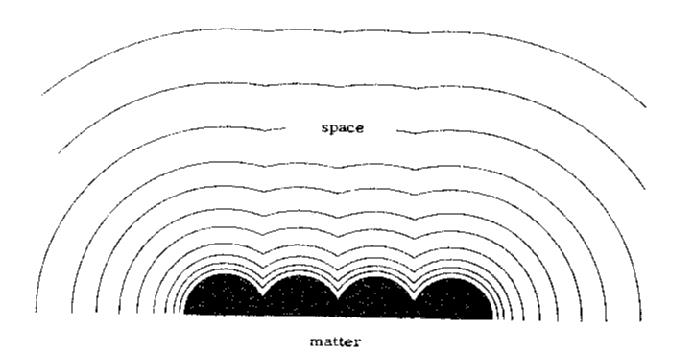 Figure 14. The space around an object is an extended field of energy with the same ‘shape’ as the matter
Figure 14. The space around an object is an extended field of energy with the same ‘shape’ as the matter
Before Einstein, space and time were each regarded as an endless continuum in which events took place. Newton taught that space and time were both absolute, existing quite independently of each other or anything else. Einstein showed, by contrast, that space and time are not fundamental and absolute, but closely related to each other and dependent on the speed of light.
The vortex shows how space, time and matter all arise from the vortex of energy; as such they are inextricably linked — they are simply different aspects of a single underlying reality. If the speed of movement in the vortex is the speed of light, then it is obvious why space, time and matter are all linked, and relative to the speed of light.
Einstein regarded the speed of light as the limit of our world. We have suggested that the speed of light is not an absolute boundary — but rather the dividing line between physical and super-physical reality. These two realities differ in substance because movement is entirely relative. Movement in one vortex creates the space and time in which another can exist and move. They are all totally interdependent; they exist only in relation to each other. In transubstantiation, the movement in the vortex is speeded up. As it exceeds the speed of light, the particle ceases to have the same relationship to the other particles left behind. In effect, it leaves their physical space and time.
Breaking out of space and time by transubstantiation would open up entirely new possibilities for travel. In our everyday experience, we travel through space and time. Via transubstantiation, bodies could move in and out of space-time, passing through the light-barrier. By this means, journeys at speeds which appear to be greater than that of light might be a real possibility.
Excerpt from The Vortex: Key To Future Science
Posted in Science For The New Agewith comments disabled.

